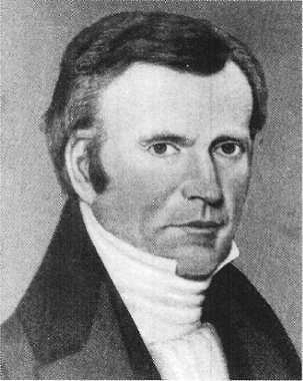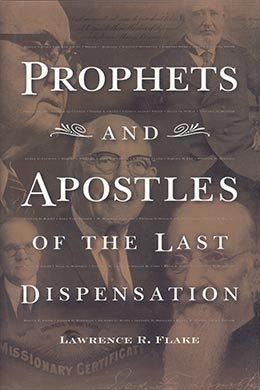Frederick Granger Williams
Lawrence R. Flake, Prophets and Apostles of the Last Dispensation (Provo, UT: Religious Studies Center, Brigham Young University, 2001), 239–41.

Born: 28 October 1787, Suffield, Connecticut
Second counselor to President Joseph Smith: 18 March 1833 (age 45)
Rejected by the vote of the Church: 7 November 1837
Excommunicated: 17 March 1839
Restored to fellowship: 8 April 1840
Died: 25 October 1842 (age 54), Quincy, Illinois
Brother Frederick, I hate to see you return home; you are going there to die.” [1] So spoke Joseph Smith the Prophet to his close friend and former counselor Frederick Granger Williams, who had been visiting in Nauvoo. Brother Williams expressed his own feeling that death was not far distant, and in fact he did die shortly thereafter, at the early age of fifty-four.
When Oliver Cowdery, Parley P. Pratt, Ziba Peterson, and Peter Whitmer Jr. came through northern Ohio in the fall of 1830 on the first extended missionary journey of this dispensation, they baptized the prominent physician Frederick G. Williams and his wife. In addition to medicine, Dr. Williams had engaged in farming, teaching school, and piloting passengers and freight across Lake Erie. One of his passengers, Rebecca Swain, became his wife in 1815. Immediately after his baptism, Brother Williams was ordained an elder and was invited to travel west with the missionaries who had converted him. Although he intended to return after three weeks, he became so involved in the work that he did not return for ten months.
Dedicating all he had to the restored Church, Brother Williams soon became a man of influence in the Church and in the city of Kirtland. He was called by revelation to serve as second counselor to Joseph Smith. The love the Prophet had for Frederick is evidenced by the fact that he named his second son Frederick Granger Williams Smith. Of his counselor the Prophet wrote, “Brother Frederick G. Williams is one of those men in whom I place the greatest confidence and trust, for I have found him ever full of love and brotherly kindness. He is not a man of many words, but is ever winning, because of his constant mind. He shall ever have place in my heart.” [2]
In addition to his duties in the First Presidency, Brother Williams was one of the scribes of the Joseph Smith Translation of the Bible, and he became a justice of the peace, proprietor of the Church’s printing operation, trustee of the School of the Prophets, and president of the Kirtland Safety Society Bank. When the society failed in 1837, President Williams became involved in the disunity that afflicted many members and leaders of the Church. In November 1837, he was rejected by a vote of the membership of the Church and removed from the First Presidency. Over a year later he was excommunicated for having left the Saints “in the time of . . . perils, persecutions and dangers, and . . . acting against the interests of the Church.” [3] At the April conference in 1840 held in Nauvoo, Dr. Williams “humbly asked forgiveness for his former wrongdoing. He expressed a determination to do the will of God.” [4] He was received into full fellowship and died a faithful Latter-day Saint two years later.
“Blessed be Brother Frederick,” wrote the Prophet, “for he shall never want a friend, and his generation after him shall flourish.” [5] His widow later married President Heber C. Kimball, and Brother Williams’s son Ezra journeyed to Utah and perpetuated his name in the Church.
Notes
[1] Frederick G. Williams, “Frederick Granger Williams of the First Presidency of the Church,” BYU Studies 12, no. 3 (spring 1972): 259.
[2] History of the Church, 1:444.
[3] History of the Church, 3:284.
[4] Nancy Clement Williams, After 100 Years (Independence, MO: Zion’s Printing and Publishing, 1951), 125.
[5] History of the Church, 1:444.
